What is a heat pump in a dryer?
When purchasing a dryer, users try to choose the most functional and at the same time economical model. There is a great demand for condensation dryers equipped with a pump for heating the air. They not only ensure the most gentle handling of things, but also consume a minimum of kilowatts in comparison with standard devices. Let's look at the main advantages of such equipment.
Key features of heat pump dryers?
Before we talk about the advantages, it’s worth understanding how condensation dryers in the Heat Pump line function. The unit draws air inside, heats it and “releases” it to the laundry. Under the influence of heat, excess moisture from things evaporates. The heat pump in the dryer is an element necessary to pump dry, hot air into the working chamber.
What does a heat pump do? Dryers equipped with a similar device take in air only once. During the program execution, it circulates inside the machine, constantly cooling and heating again. Due to this, it is possible to achieve minimal energy consumption.
The “trick” of dryers equipped with a pump is a closed heat exchange system.
Due to closed heat exchange, the machine does not have to waste energy on constantly taking in air from outside and heating it to 40°C. The air flow simply circulates in the machine, cooling to no more than 30°C. Due to this, dryers with a pump consume a minimum of kilowatts.
Such condensation type machines consist of the following elements: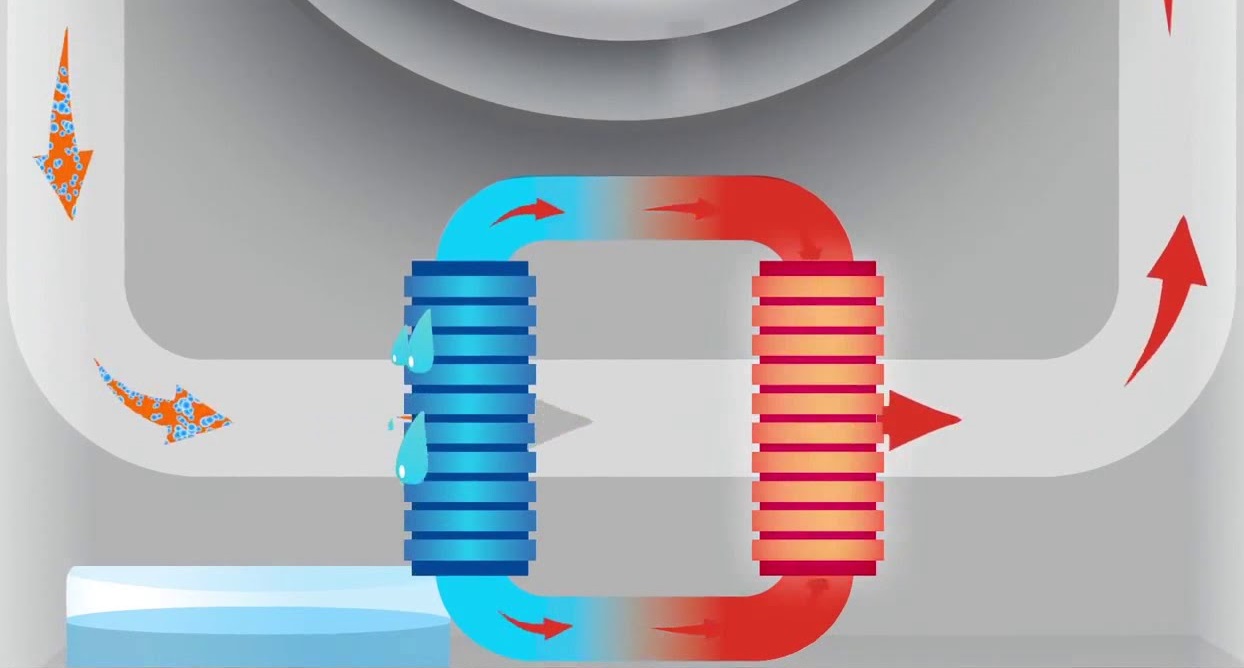
- drum - wet laundry is placed in it;
- engine;
- drive mechanism;
- evaporator with refrigeration element;
- pump (the element heats the air, already freed from moisture);
- hair dryer fan – directs hot air flow inside the working chamber.
The operating principle of machines with a pump is extremely simple. Let's look at the main stages of this process.
- The air “enters” the system and is heated by the heat pump.
- The fan directs the air flow into the drum, towards the wet laundry.
- As the temperature in the drum rises, moisture evaporates from the fabric.
- “Wet” air is directed to the refrigeration element into the evaporator.
- The evaporator cools the air masses, the condensate settles in a container provided for this purpose.
- The “dehydrated” air enters the heat pump.
- The air in the system is reheated.
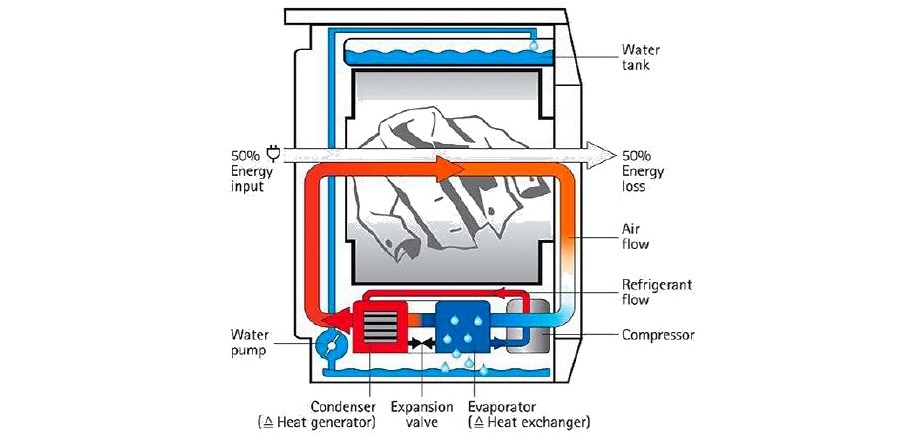
Condensing machines do not need to be connected to house utilities; they can be easily placed in any room. To operate the device, you only need a power outlet, which is very convenient. If desired, the equipment can be connected to a sewer or ventilation system.
Even delicate fabrics can be loaded into appliances equipped with a heat pump. The air in the system warms up to a maximum of 40°C, which ensures gentle treatment of laundry. However, the program itself lasts a little longer than the algorithms in dryers without a pump.
The main advantage of condensation dryers with a pump is considered to be high energy efficiency. They “eat up” less kilowatts than conventional models. If you choose such a device, your electricity bills will be ridiculous. However, when purchasing, you will have to overpay - such equipment costs ten to fifteen thousand more than analogues without a heat pump.
Scheme of operation of a condensation “dryer”
In addition to the “advanced” modern dryers with a pump, there are more budget models on the market without a heat pump. Such machines also do not need to be connected to communications. All that is needed is access to an outlet.
The design of such machines is quite simple. Dryers consist of:
- a drum where wet laundry is placed;
- motor;
- a drive mechanism that ensures the rotation of the drum;
- heating element - it “brings” the air flow to the desired temperature;
- a fan that “drives” hot air through the working chamber;
- a pump designed to pump out the resulting condensate;
- compartment for collecting water.
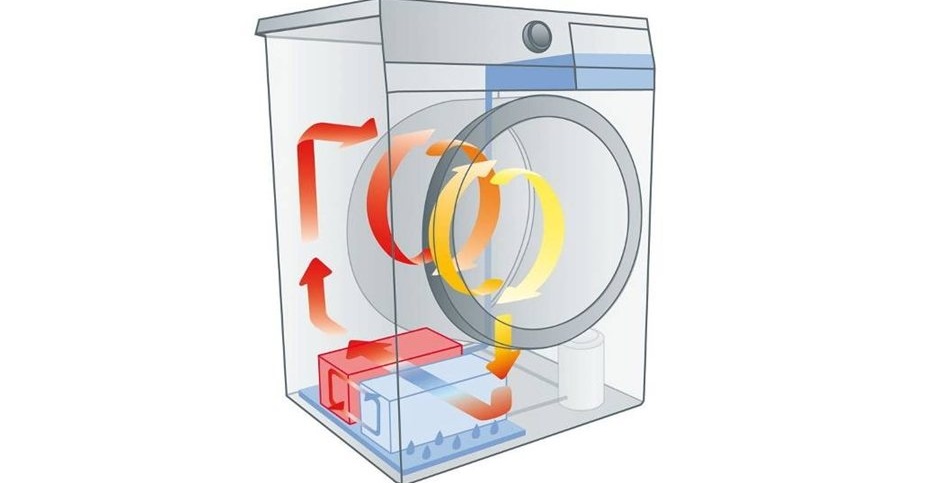
The operating principle of such models is somewhat different from the operation of machines with a heat pump. The stages of the program will be as follows:
- air is taken in;
- the heating element “brings” the air flow to the set temperature;
- the hair dryer directs hot air into the drum;
- moisture evaporates from things under the influence of high temperature;
- the pump pumps condensate into a special tray;
- the dryer again takes in air from outside and the algorithm repeats.
The selection of modes in the intelligence of condensing machines, both with and without a heat pump, will vary depending on the model. It is better to check the number of programs and options before purchasing. The following functions are commonly found:
- delicate drying;
- express drying;
- drying items made from various fabrics: cotton, synthetics, linen, wool, etc.;
- drying to a certain percentage of humidity;
- easy ironing (when this function is activated, the items in the drum practically do not wrinkle);
- delayed start;
- drying shoes, down clothes, etc.
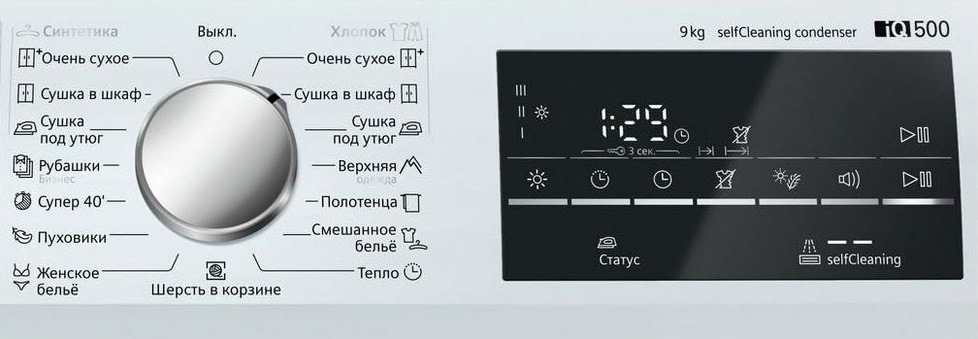
How to maintain equipment? Condensation-type machines require minimal maintenance; you only need to periodically drain the water accumulated in the container and clean the filter from lint and dust. This will have to be done once every one to two weeks.
A significant disadvantage of machines without a heat pump is their high electricity consumption.
The dryer collects and heats air several times per cycle, which is reflected in the consumption of kilowatts. Therefore, in order to save money, it is better to choose “advanced” models that include a pump.
So what does the heat pump provided in the dryer do? It allows you not to re-assemble, but to reuse the air flow existing in the system, cooled to 30°C. Therefore, the device spends less energy on heating and additional air intake.
Interesting:
Reader comments
- Share your opinion - leave a comment

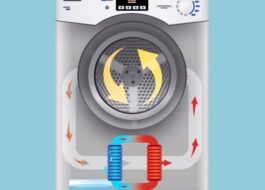
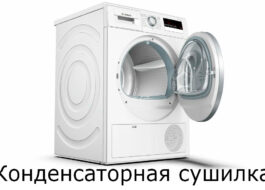
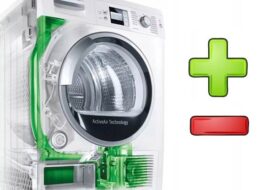
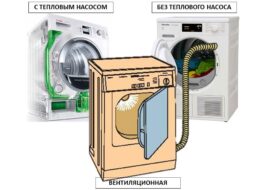
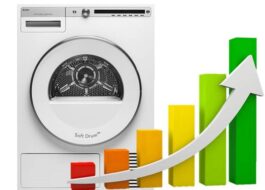
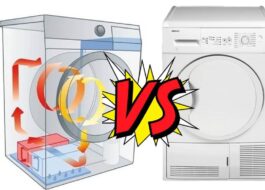














Add a comment